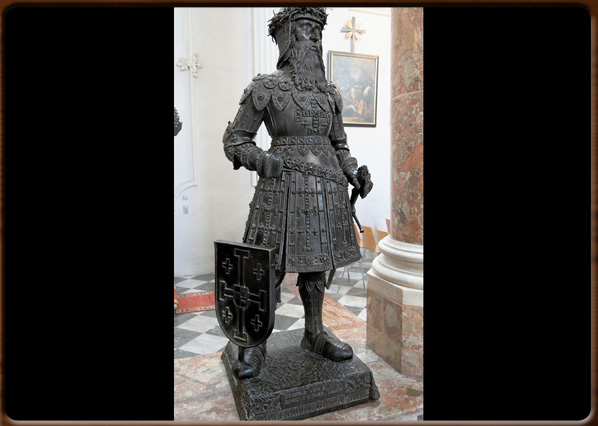
Fondaco dei Turchi.

Godfrey of Bouillon, bronze statue, Innsbruck.

The Middle East.

The spices and incense roads.

The silk roads.





No video
Thanks to its trading activities, Venice quickly became the European centre for trade with the East.
The Venetian Republic dominated the trade routes to the Near East for centuries, to the point that the Orientals called Venice “bunduqiyya”. It would appear that Venetian merchants were the first to export these primitive firearms to ports along the eastern Mediterranean coasts. The elegant palaces and finely worked precious stones in Venice also prove that it was influenced by oriental civilisations: a cultural exchange that lasted for centuries.
Venice’s commercial colonisation of the East Mediterranean was the result of the Crusades: during the first (1099-1100), the Venetian Republic sent a fleet of 200 ships to Jaffa, at the service of Gottfried von Bouillon (Goffredo di Buglione); in return, Venice was granted the right build a church and a marketplace in every city conquered by the crusaders, plus an exemption from tax and duties throughout the Kingdom of Jerusalem. These colonies could be found throughout the area, from Alessandretta to Jaffa in the 12th Century and were important centres of trade and ports, much as had happened with the Phoenicians, the Greeks and the Romans in ancient times. Local products were added to the products coming from India, Persia and the Far East (pepper and spices, perfumes, precious stones and silk). These were mainly from Syria and included cotton, alum, arms and other craft items. These were exchanged for a few products from the West, such as timber, metal and woollen cloth.
Other important trading posts were Laiazzo (Ayas, Yumurtalik) and Antioch (Antakya) in Turkey, Tripoli, Aleppo in Syria and Jerusalem.
While the Middle East (and especially Syria) and the Black Sea were the major markets for goods coming from India and the Far East, Egypt was the outlet for goods coming from the African continent, Libyan salt, Arabian precious stones (such as onyx and cornelian), plus products from the islands in the Indian Ocean.
The latter were entrusted to vessels driven by the Monsoons to the African coast, the ports in the Persian Gulf and the Red Sea, where they were then taken up the River Nile to Alessandria. Needless to say, two of the oldest Venetian “mude” went to Syria and Alexandria.
1100 - 1200 - - rev. 0.1.7